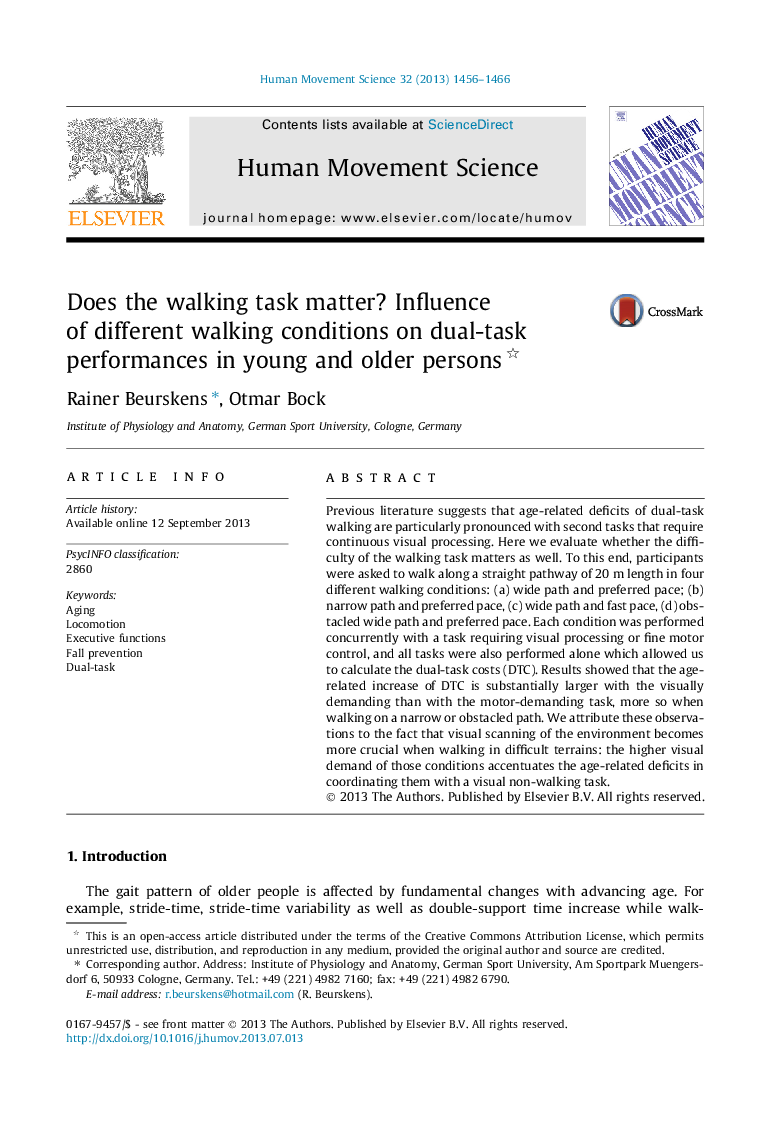| Article ID | Journal | Published Year | Pages | File Type |
|---|---|---|---|---|
| 10459157 | Human Movement Science | 2013 | 11 Pages |
Abstract
Previous literature suggests that age-related deficits of dual-task walking are particularly pronounced with second tasks that require continuous visual processing. Here we evaluate whether the difficulty of the walking task matters as well. To this end, participants were asked to walk along a straight pathway of 20Â m length in four different walking conditions: (a) wide path and preferred pace; (b) narrow path and preferred pace, (c) wide path and fast pace, (d) obstacled wide path and preferred pace. Each condition was performed concurrently with a task requiring visual processing or fine motor control, and all tasks were also performed alone which allowed us to calculate the dual-task costs (DTC). Results showed that the age-related increase of DTC is substantially larger with the visually demanding than with the motor-demanding task, more so when walking on a narrow or obstacled path. We attribute these observations to the fact that visual scanning of the environment becomes more crucial when walking in difficult terrains: the higher visual demand of those conditions accentuates the age-related deficits in coordinating them with a visual non-walking task.
Related Topics
Life Sciences
Neuroscience
Cognitive Neuroscience
Authors
Rainer Beurskens, Otmar Bock,
